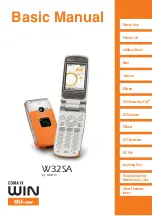
STE User’s Manual
Calls
Rel. 2.6
7-9
7-3. ISDN VOICE CALLS
7-3.1
Achieving the Highest Quality of ISDN Service
In order to insure the highest quality of service (when calling another STE), calls must be initiated in
secure mode. When calls are initiated in auto-secure or secure modes, the STE attempts to obtain a data
service and provide fast security establishment, quality ADPCM secure voice and synchronous data rates
to 128 kbps (asynchronous rates to 38.4 kbps). When calls are initiated in non-secure mode, the STE
obtains a voice service, which may or may not support improved STE modes. On a voice service, your
best-case secure performance will be fast security establishment, quality ADPCM secure voice, and
secure data up to 38.4 kbps. If the voice service does not support the best case (digital signaling) or the
VBSCT test is disabled, you will have slower call setup, CELP encoded secure voice, and up to 9.6 kbps
secure data or SCIP MELP 2.4 kbps or G.729D 6.4 kbps.
Although the highest quality of service is obtained by initially placing secure calls and obtaining data
bearers, there may be other advantages to initially placing non-secure calls. Supplementary services
such as “call hold” and “transfers” are not generally supported on data service. Your carrier may charge
you a per minute connection fee on data service. Therefore, security considerations aside, you may
prefer to place non-secure calls, especially if they generally support higher quality modes and you do not
plan to exchange synchronous data.
7-3.2
ISDN – Initiating Calls
Upon going off hook, the STE will display one of the menus shown below (
depending on the Initial Mode Setting (Auto-Secure, Traditional, Secure-Only). For each mode, follow the
instructions in the table immediately below each menu to place a call.
Figure 7-6. ISDN Auto-Secure Off-Hook Menu
Where in each display:
Line
1:
“x” is the line being used for the call
“mmm” is the application type (NSV, SV, SD)
“ssss” is the application rate in kbps (2.4, 4.8, 6.4, 9.6, 19.2, 32, 38.4, 56, 64, 112,
115 or 128)
Line
2:
“p” is the AUTOVON precedence indicator (FO is Flash Override, F is Flash,
I is Immediate, P is Priority, and if blank the precedence is Routine)
Called Number: is the number being called, as dialed by you.
AUTO-SECURE MODE LINEx: mmm ssss
NONSEC
Dial:p<Called Number>
SECDATA
Summary of Contents for CEU
Page 2: ...Copyright 2006 L 3 Communications Corporation ...
Page 26: ...List of Tables STE User s Manual xiv Rel 2 6 This page intentionally left blank ...
Page 32: ...Introduction STE User s Manual 1 6 Rel 2 6 This page intentionally left blank ...
Page 132: ......
Page 181: ...STE User s Manual Crypto Card Management Rel 2 6 6 25 ...
Page 182: ......
Page 210: ...Calls STE User s Manual 7 28 Rel 2 6 This page intentionally left blank ...
Page 234: ...Remote Control Operations STE User s Manual 8 24 Rel 2 6 This page intentionally left blank ...
Page 258: ...8510 Capabilities STE User s Manual 9 24 Rel 2 6 This page intentionally left blank ...
Page 284: ...User Maintenance STE User s Manual 11 6 Rel 2 6 This page intentionally left blank ...
Page 288: ...Notes STE User s Manual 12 4 Rel 2 6 12 4 CE DECLARATION OF CONFORMITY ...
Page 306: ...Index STE User s Manual Index 18 Rel 2 6 This page intentionally left blank ...
Page 308: ...Rel 2 6 FP 2 FO 2 User Tree ...
Page 311: ......
















































